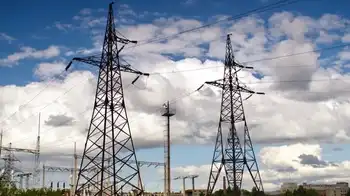Proposed Vale plant could cut electricity costs in half
By Sudbury Star
Protective Relay Training - Basic
Our customized live online or in‑person group training can be delivered to your staff at your location.

- Live Online
- 12 hours Instructor-led
- Group Training Available
The Copper Cliff Mine 114 Orebody Demonstration Plant will allow the company to test new and innovative mining technologies that could "dramatically improve mining processes across our operations," said Vale's Alex Henderson, general manager of mines and mill technology for the North Atlantic Region.
New technology developed in Sudbury by Rail-Veyor Technologies will be installed at the plant later this year. It will be the first underground application of the technology in North America.
The 114 Orebody Demonstration Plant is a new facility that will be built at the ore body in Copper Cliff, near Copper Cliff Mine and Clarabelle Mill, said Vale spokeswoman Angie Robson.
The purpose of the demonstration plant will be to "prove the technology" and prove that it can be applied underground, she said.
"It really could be the next big step change in mining and, from a safety, health and environment perspective, this really has some enormous benefits going forward."
Vale is estimating it could cut its energy consumption in half "because, as we go deeper, we require more ventilation. Right now, we use diesel equipment, which requires large drifts and requires a lot of ventilation to make sure the working environment is healthy," said Robson.
The Rail-Veyor system is essentially a small train. "It's electric so there is no diesel, there is no gas. From an energy reduction and carbon reduction point of view, it's very, very significant," said Robson.
The technology would also improve safety by reducing the risk of vehicle collision and increasing ground support.
"As you go deeper, the ground becomes more unstable and there's more ground support needed. With the Rail- Veyor, because it's quite literally like a small train, our drifts would have to be much smaller than they are now, so that would lend to increased ground support.
The Rail-Veyor would replace the large diesel equipment that Vale is using now.
Robson quotes Henderson as saying: "Right now, we bring the ore to the shaft, to then be brought up to surface. This would essentially bring the shaft to the ore.
"It's a much more efficient way of mining."
The system will lead to quicker development of ore bodies and make it profitable for Vale to mine ore bodies that might not have been economical before, "which is important for the ongoing sustainability" of Vale's operations, said Robson.
Mike Romaniuk is president and chief executive officer of Rail-Veyor Technologies in Sudbury.
At a news conference Friday, he said he looked forward to "advancing the commercialization of the technology in underground mines on a global basis."
Greater Sudbury Mayor Marianne Matichuk attended the news event, and said with projects such as Rail-Veyor, the city will continue to bring innovation and technology to new heights.
"Vale continues to be a key contributor to the mining industry, not only here at home, but around the world," said Matichuk. "Technology of this magnitude means sustainable income in a city where growing the job market is of the highest importance."
Robson said the project is expected to create about 100 jobs until it is complete in the first quarter of 2013.
The $49-million pricetag for the demonstration plant is part of the $3.4 billion in investments Vale will make in Sudbury operations in the next few years.











